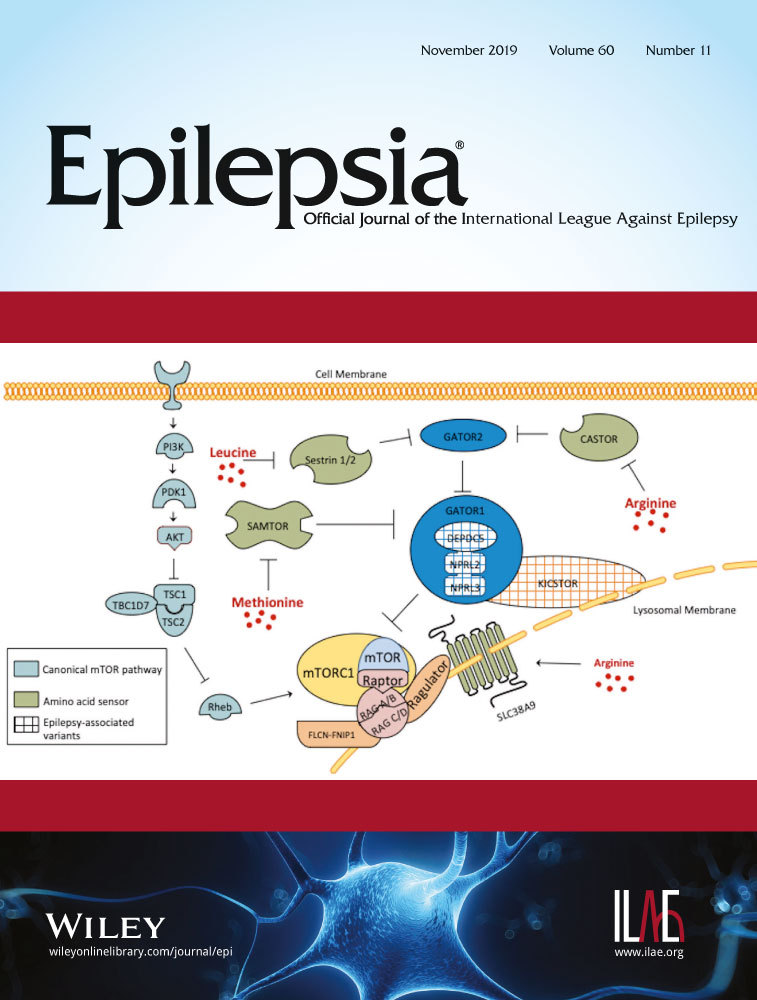Long-term efficacy of add-on stiripentol treatment in children, adolescents, and young adults with refractory epilepsies: A single center prospective observational study
Abstract
Objective
To assess the long-term efficacy and tolerability of stiripentol (STP) as an adjunctive treatment in different forms of refractory epilepsies.
Methods
The medical records of all individuals consecutively treated with STP as add-on therapy for refractory epilepsies, irrespective of their being focal, generalized, or both, and followed at Meyer Children's Hospital between January 2007 and May 2018, were reviewed. The drug scheme administration consisted of a starting dose of STP of 10-15 mg/kg/d with increments every week, up to a maximum of 50 mg/kg/d, based on both age and weight. Etiology of epilepsy was codified as structural, genetic, infectious, immune, metabolic, and unknown. Responders were defined as patients who achieved a seizure frequency reduction of ≥50%. Retention rate was defined as the probability of continuing STP without additional therapy. Tolerability was assessed by reporting adverse events.
Results
A total of 132 individuals aged from 5 months to 43 years received add-on STP, including 30 patients with Dravet syndrome (DS). The median follow-up was 14.8 months (range = 4 months-18 years, interquartile range = 25.72). Twenty-nine individuals (22%) received more than two antiepileptic drugs. Benzodiazepines, mainly clobazam, were the most commonly used add-on drugs. Sixty-six patients (50%) were responders, and 13 of them (9.8%) were seizure-free. Responder rate was higher in the genetic etiology group (57%), especially in DS (18/30; 60%), and in patients with refractory focal onset epilepsy without bilateral tonic-clonic seizures (5/15; 33%). The median relapse-free survival was 27 months in the 66 responders. The median time to STP failure was 24.6 months in all 132 individuals.
Significance
This study confirms the long-term efficacy of add-on STP treatment in patients with different types of refractory epilepsies, including focal onset epilepsy without bilateral tonic-clonic seizures. Further confirmations based on prospectively designed studies are required to confirm STP efficacy in focal epilepsy.
CONFLICT OF INTEREST
R.G. has acted as an investigator for studies with Zogenix, Biocodex, Biomarin, UCB, and Eisai. He has been a speaker and on advisory boards for Zogenix, Novartis, Biomarin, GW Pharma, and Biocodex. None of the other authors has any conflict of interest to disclose. We confirm that we have read the Journal's position on issues involved in ethical publication and affirm that this report is consistent with those guidelines.




